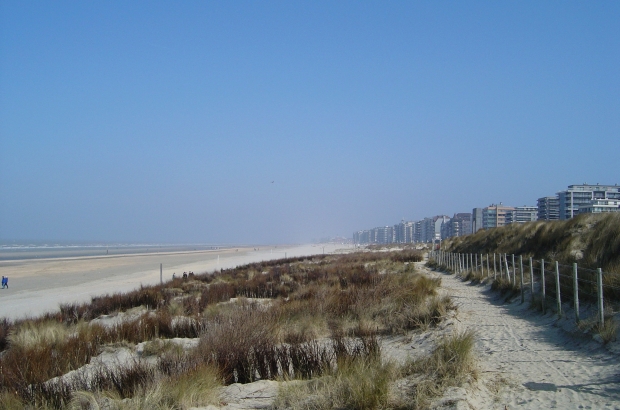- Daily & Weekly newsletters
- Buy & download The Bulletin
- Comment on our articles
Climate change plan could see half of Belgian coast flooded
The coastline between De Panne and Ostend could be flooded by 2100 in response to rising sea levels, according to a report by a team of Belgian architects. This radical scenario is the most extreme of four options proposed in a study called Metropolitan Coastline 2100.
The aim of the report was to suggest solutions to the predicted one-metre rise in the sea level caused by climate change. The report, which set out to “maximise the quality of life in the regions affected”, was drawn up by architects working with the Flemish departments of urban planning and public works and the maritime services division.
The most controversial plan – known as the Bipole scenario – would abandon the entire western coastal zone to the sea. “There would no longer be any active investment in keeping out the sea or in urban development or the economy,” the report said. “The western coast would be progressively de-urbanised and restored to its natural state.”
The resorts of De Panne (pictured), Koksijde, Oostduinkerke, Nieuwpoort and Middelkerke would gradually disappear into the sea under that plan. “This looks like a boycott of the Westhoek,” said Ann Vanheste, mayor of De Panne. The governor of West Flanders province, Carl Decaluwe, was also against the plan to flood large areas. “The answer is to claim land from the sea,” he told De Morgen.
The Zone scenario, meanwhile, would involve the construction of a defence wall along the entire coastline, with new pipes to carry excess sea water inland to polder land. The third option – the Archipelago – would leave the coast untouched while using large inland areas of undeveloped polder as catchment areas for flood water. And finally, the Mosaic scenario involves the construction of an elaborate network of canals to manage the water.
“We have to do something to allow nature to absorb the sea water,” said Joachim Declerck, one of the architects involved in compiling the report. “We can’t just keep on building.”
photo courtesy Luna04/Wikimedia Commons



















